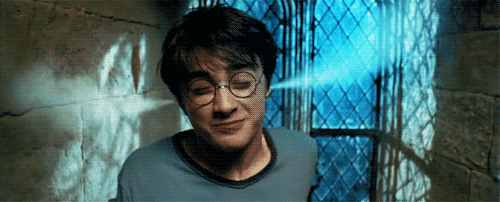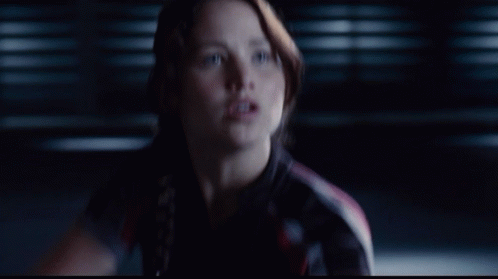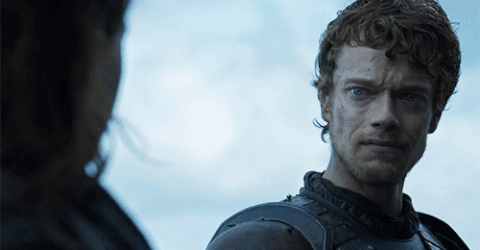There’s no denying that the hero character is still well beloved by most story consumers. But if you want to know how to write a hero in a way that doesn’t feel derivative, this is the place for you.
The benefit of the self-publishing industry exploding means that writers everywhere get to tell their stories. But this is also somewhat of a drawback because if one character archetype is used more than any other, it’s the hero.
You can and should still write hero characters. Readers love them for a reason. But what they don’t love is when the hero and story are so predictable they’re no longer entertaining.
These tips will help you write a good hero readers want to root for, but one that doesn’t feel like the same one they read all the time.
Table of Contents
How to Characterize in a Unique Way While Being True to the Hero Archetype
Who your hero is matters. They’re carrying the entire story. If your readers don’t like them or they don’t live up to a true hero status, you can lose readers quickly.
Part of learning how to write a hero is their overall character development, which has some nuances specific to being the hero.
1. Good, deep down
Unless you’re writing a hero-turned-villain story, your character will need to be good at their core. And this has to be established early-on for the reader so they know.
It’s really hard to write a hero who’s unlikable unless they’re very, very good at what they do, and has a good reason to be unlikable. Take the movie Hancock for example. Will Smith plays a superhero, literally. Except he’s an alcohol, unpleasant, and damages property. People don’t really like him, despite his role as “hero”.
Tony Stark is another example, except he’s made more likable by his ability to be both arrogant and charming at the same time.
Regardless of both these characters’ situations, they are good deep down. Even if we’re uncertain at first, as readers.
For example, in Iron Man (I know it’s a movie, but story is story), the movie starts by zooming in on army vehicles driving through Afghanistan, and the personnel are fully dressed in their gear. You’d think it’s a high stress, important situation.
Then they zoom in on a glass of what is evident alcohol, in the hands of a polished man dressed in a suit. At first, we might think he’s too unlikable. But then he opens his mouth in a rambling, intelligent, and funny manner in which he leaves the crew laughing.
This isn’t the only display of Tony Stark being a “good guy” at heart, but it is enough to forgive his later unsavoriness.
The point is: your hero has to be good deep down, or at least, they have to be willing to do the right thing when it counts. The latter is specifically in reference to morally gray characters, also known as anti-heroes. Otherwise, you’re probably writing a villain.
Which is still cool, but not quite the same.
How do you make this not derivative? In the way they go about their goodness, and where it specifically shows itself. There are countless ways to make someone good, but in the end, goodness is never derivative.
2. Flaws & weaknesses
You don’t want a perfect character. That would make them a Mary Sue and while faultless characters used to be intriguing back in the day (the original Superman), it’s not what our current culture wants or needs. Because art sheds light on culture, books have a responsibility to serve the readers of their time. In our current culture, perfection is the allusion most of us are falling for.
Social media and everyone’s highlight reel of life is only showcasing how great and perfect everything is. In reality, everybody is facing some flaws and weaknesses in their real lives. By writing a flawed character, you’re showing today’s culture (and the future’s) that flaws are important and something everyone has.
Especially heroes.
Kryptonite is not a good enough weakness to stand on its own when it comes to knowing how to write a hero. You need something more significant and purposeful—meaningful emotionally.
Character Flaws: personality traits that can be annoying or cause other characters to dislike them or other types of plot conflict.
Examples: argumentative, desperate to please, takes on too many responsibilities, doesn’t have a filter and talks too much, never shares how they feel, shares how they feel too much, prideful, arrogance
Character Weaknesses: a specific external thing that can cause them immense harm either physically or emotionally.
Examples: Kryptonite, Voldemort being near and hurting Harry’s scar, alcoholism, the ex who broke the hero’s heart, children, able to care for everyone but themselves
The trick is to make these at conflict with one another, and have the weakness stem from your hero’s past. Because that’s a recipe for hardship for your character and as much as we love them, your hero has to struggle to gain the love and reputation of a hero in the first place.
3. A choice
Being a hero shouldn’t be forced on them. There should always be a choice for them to step down, and maybe they do. That’ll be covered in the setbacks portion below. But especially if you want to avoid a predictable hero, give them the option to walk away.
Is heroism truly so if it’s forced? Part of what makes a hero so intriguing is that they’re choosing to be good, which plays into the first point above. Tony Stark doesn’t have to do anything. He chooses to. That very choice is what makes him likable in the first place, especially after the first story and when we see that good change in him. After that, he uses his technology and wealth for good.
But this also gives you room to plot the story in a way that allows the hero to walk away, even if for a while. A hero forced into that line of work would probably resent it. It’s more of a making for a villain story.
In a true hero’s journey story arc, the hero has a moment of “refusing” the call. They turn it down and can’t be a part of it. After this, there is always something that happens to make the character change their mind. This is a pivotal part of knowing how to write a hero, because what makes them change their mind becomes their purpose.
It becomes the stakes.
Example:
[mild spoilers] Take Kaladin from Brandon Sanderson’s Way of Kings series, the first book specifically. After failing to save a number of people of importance to him, he’s about to give up. For good. He’s sitting on the ledge of a cliff where many bridgemen before him have leapt to their ends. He’s about to join them at the bottom. After this moment, when he decides to stay, his purpose is changed. The edge of death and the realizations it brought pulled his purpose to the forefront; he would not fail to help the bridgemen—to keep them alive. He chooses to keep going and to become the hero necessary.
4. Capability
Whether they have this from the beginning or they learn it along the way is up to you. Both have been done really well. Learning it definitely offers an opportunity to have easier progression through the story, but having the ability from the start allows for more flexibility in the hero’s story.
- Tony Stark has all his intelligence from the beginning, but he learns how to navigate his suit in the early stages.
- Hancock already has all of his super abilities, as does Superman.
- Katniss can already shoot a bow and arrow well.
- Harry Potter has to learn magic (and grow up, in general).
- Spiderman learns to be a hero from scratch.
So long as your character becomes capable in some way, they will fulfill this need. But if you want to avoid being predictable, choose to make them capable in different ways. Don’t make them a really great fighter. In fact, make them a terrible fighter, but make them capable of shit-talking their enemies so much that they can still win fights.
Make them awful at certain much-needed hero-ing abilities, but make them the funniest character who can make every enemy like them.
“Capable” doesn’t always mean skilled in a specific way that makes them good at the hero role. Some of the most fun and interesting heroes are capable at random things that they can use to accomplish their hero goals.

5. A reason for being the way they are
All good heroes have a backstory. In most cases, it’s a traumatic backstory. Case in point: Tony Stark. He’s arrogant. Sometimes he’s an ass. But he also had a really terrible past where his parents were murdered when he was only 21-years-old. While a good hero backstory, this is also the classic orphaned child character archetype used over and over again.
You can do better than that.
Depending on the genre, you can tweak their backstory on a spectrum of traumatizing to neutral. What would be worse than a traumatic childhood? Maybe a perfect one. One where their parents were nothing but encouraging and helpful. One where they never had to struggle for anything. And now, after awakening to some sort of abilities or purpose, they have to face struggle.
Okay, maybe that’s not a worse backstory, but it is different than most of what you find out there. So use it! Or brainstorm other examples of backstories and how it could negatively impact a hero. Because at the end of the day, the backstory has to cause conflict in your hero to make for a good plot. A lot of times, the backstory is what brings on your character’s weaknesses.
How to Plot for a Hero Story
The plot plays a huge role when it comes to learning how to write a hero. After all, there’s an entire plot archetype called the hero’s journey that can help you shape your story.
There’s also three act structures, or if you’re like Brandon Sanderson, 5 act structures.
The point is, many different storytelling structures will work for plotting your hero’s story. But no matter which you use, you want to hit on certain non-negotiables in order to know how to write a hero well. Remember that while these are necessary,
1. Grand Moments
The hero isn’t born, they’re created. At least, in the eyes of the reader this is the case. You can’t open a book and have your character just be a hero already.
Even if they’re known as a hero (like in the case of superhero stories), the reader still needs proof. They need to make their own decision. That’s where the plotting comes into play. You’ll need to plot certain obstacles for your hero—the more grand, the better.
But what does “grand” even mean? Multiple explosives and a hero walking out in slow-motion, unscathed?
No. It’s much more complex than that—especially if you want to know how to write a hero that’s not derivative.
There are many ways a writer can interpret “grand,” but there is no doubt we know the purpose of these moments in fiction. They’re the memorable moments. The ones a reader will share with a friend to convince them to read the book. But where most writers get wrong is that they make these physically grand scenes instead of the other form of grand.
Grand moments for a hero are the ones that change them internally, a moment of growth.
This is a key factor that makes the moment feel more significant. While the reader might describe the huge fight scene that the character had to force their way through, it was what that scene did to the hero that stands out. That’s the piece the reader isn’t saying, mostly because they don’t realize it.
Above we talked about your hero needing to grow and complete their character arc. These grand moments can serve as that, but you have to plot them that way.
It can’t be easy. The reason it’s grand in the first place is because it requires a lot of the hero.
But these can’t be how you plot the entire book. Save the grand moments for the times when your character is forced to grow to become the hero that’s needed by the time the climax comes around.
Here are some examples of grand moments in fiction (spoilers may ensue):
- Katniss in The Hunger Games: one grand moment is when she’s training before the games. All the people who are judging her (to give her a score) are ignoring her. She’s hitting targets left and right, showcasing immense skill. And they’re ignoring her. So what does she do? She fires and arrow right at them, through the apple that’s resting in the mouth of a cooked pig meant for feasting. This moment is grand (significant) because she needed to be angry at the institution—but actionably angry. Prior to this moment, she was fearful and even resentful. But in order for her hero character to become the version that eats those berries at the end, she had to first be actionable in some smaller way about her distaste for the people of The Capitol.
- Kaladin Stormblessed in Way of Kings: There’s no doubt that this character is a hero. It’s the moment where Kaladin took his internal being, who he truly is, and showed it to the bridgemen when before he was secluded, solitary, just like everyone else. Why is this more significant than when he determined that he’d be bridgeleader (and threatened someone in charge to do it and take over)? Because that was still an internal moment. In order for Kaladin to be the hero he needs to be by the climax of his storyline, he needs to have followers. This grand moment is the first time he made it possible to have true followers—literally and figuratively.
- Harry Potter in the First Book: While only eleven in the first book, Harry Potter still has grand moments. He has many throughout the series, but let’s focus on the first one: denying Draco Malfoy. He’s new to the wizarding world and a clearly popular, confident child has just attempted to befriend Harry. But he says, “I think I can tell the wrong sort for myself, thanks” snubbing Malfoy publicly. Why is this grand? Because Harry can’t defeat Voldemort by himself. The very basis of Draco and the entire house of Slytherins is that they are internally motivated—selfish. Harry Potter can’t prioritize those types of people or ideologies if he’s to be the hero of this story. Therefore, there are grand moments crafted to turn him into a person who allows for help. Plus, it delineates him from the “bad” in the eyes of the reader.

Notice that these moments aren’t all big, but they are grand. They’re impactful even if they’re not the climax of the book. In fact, the climax will certainly be grand but the moments above are all examples of how to use grand moments to complete your hero’s arc and help them grow.
Here are two things grand moments need:
- To be actionable: it’s the hero taking action.
- To be emotionally significant to the character: it has to touch a nerve. It has to consider the character’s past in such a way that it’s meaningful to them.
Ask yourself: who does my hero need to be at the climax? The moments you craft to change them into that person are the grand moments.
To get a more detailed look at this specific advice, check out this video about grand moments in fiction.
2. Setbacks
There is no story without struggle. Because struggle is conflict and conflict is basically the entire premise of the plot. But what creates that conflict oftentimes are the setbacks our heroes face.
They’re called setbacks for a reason: the hero is pushed backward on their journey to accomplish their goal, usually by a failure related to their flaws and weaknesses.
It’s hard to “hurt” our characters. We love the, and as authors that makes us take it easy on them. But good stories are comprised of good conflict. And good conflict is painful for the character going through it. In truth, when the hero crawls out of the hole that is their own failures, it makes for the grand moments.
You can’t have grand moments without first having setbacks.
It’s the hero’s willingness to keep going and fight back harder after these setbacks that make for the kinds of scenes that leave the audience with goosebumps. But how do you craft a setback that doesn’t make a reader hate your character?
- Link the setback to their flaws and weaknesses, meaning it was their own fault: Even if the villain of your story is the one who took an action that results in your hero losing, craft the plot so the reason the villain acted was because of your character.
- Example:
- Make sure they are still redeemable: if your character makes such a mistake that the reader now hates them, it’s nearly impossible to climb out of that hole. But they do need to climb. They have to make up for it and grow.
- Example: Theon Greyjoy [Game of Thrones spoilers] Not many would describe Theon as a hero. He was much more of a redemption story, but for the sake of setbacks, he’s a prime example. When he takes over the North and betrays people who took him in like family by way of murdering two innocent children (pretending they were the young Stark boys), it’s almost impossible for him to be redeemed. How is he then? It’s the fact that he is then punished. The punishment must be fitting to the mistake if you want your characters to be redeemable. In this case, Theon had to be tortured to extremes and he had to redeem himself by saving Sansa Stark and escaping. But that still wasn’t enough. In the end [spoiler] Theon sacrifices himself for Bran Stark and is killed. His crimes were so severe, that only extremely good deeds and death saved him.
While setbacks are important, they can’t be so severe that there isn’t a realistic way for your hero to, well, be a hero again. The setbacks should serve to enlighten your hero to the fact that they have flaws and weaknesses to overcome in order to accomplish their goals.
And if you’re worried about how to pace this, following a version of the “yes but, no and” rule works, where whenever an event occurs, you alternate answers when asking yourself, “did they accomplish their goal?”
- Yes, but….something unexpected or bad has come as a result and now they have to figure it out.
- No, and…now they have run out of time to make up their mind about a decision so it’s a double loss.
This helps maintain a sense of progress while still introducing different types of conflicts in the story.

3. A Change of Plans
Because of the setbacks, your hero has to change plans. They have to find a new—better—way of accomplishing their goal. Usually, the new plan comes to be as a result of them changing, learning, and growing after all those setbacks.
Theon Greyjoy would not be able to sacrifice himself for Bran if he doesn’t first realize his faults and change his ways.
But that’s certainly not the only example of a change of plans.
In Brandon Sanderson’s Way of Kings [spoilers], Kaladin first tried to get the bridgemen to work as a unit and survive the bridge runs while devising another plan to help them escape. But he made a miscalculation in his desperation to save them by rushing before they were ready, and as a result, there was a new leader overseeing the bridgemen. This was bad.
Because the new leaders did not tolerate him. They gave him and his crew a specific job and more bridge runs, essentially cutting off a major resource Kaladin needed and increasing the chance his men would die by sending them on more bridge runs.
He had to make a change. That change resulted in, essentially, his ability to save his men in the end, though the method was a complete 180 from his original plans.
The change of plans in your hero’s story has to come after the biggest failure yet, with little hope of their original plan working at all.
If your hero has to cross a bridge in order to attack, the bridge is destroyed.
If they have to get answers from the only person who has them before confronting the villain, that person just died.
If they have been growing an army for a rebellion attack, their army is suddenly cut in half from poisoning.
Whatever was the main driver for them accomplishing their original goal has to no longer be an option, whether for external or internal means (like they have had a change of heart morally). This is what preludes the climax in your story. This is what makes for an unexpected climax altogether.
Just make sure that you’re doing enough foreshadowing so this doesn’t completely blindside your audience. You want them to be able to look back on what they’re read and feel like it makes sense.
Writing a hero is no joke. It is a responsibility to not only create a story that readers love, but doing so in a way that’s not overly predictable. By following some of these tips for characterization and plotting, you’ll be well on your way to knowing how to write a hero worth crafting a series around.
